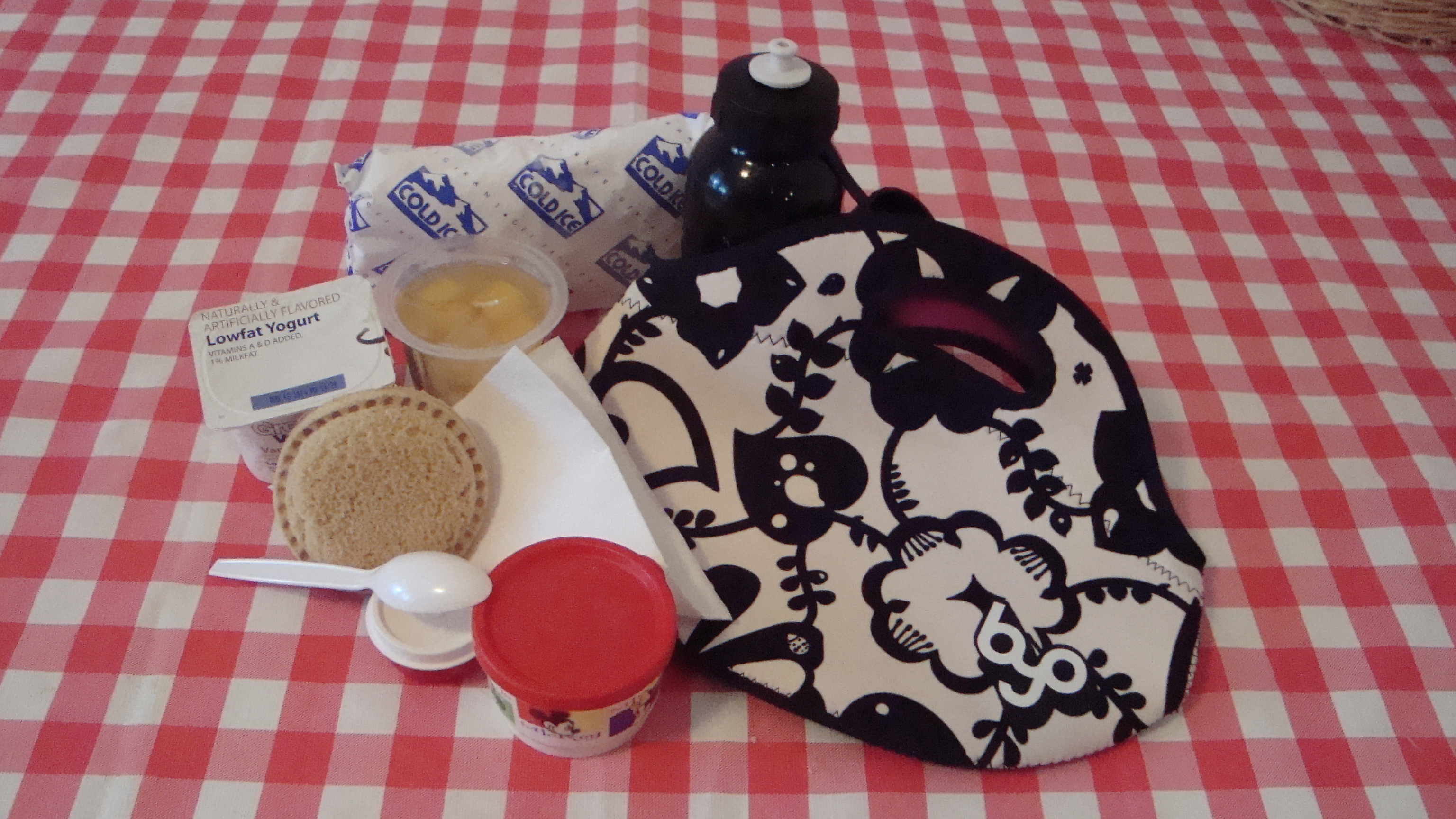
by Angela Hinkle | Sep 6, 2014
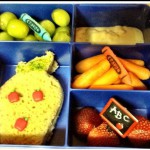
Use colorful foods and interesting shapes to make lunches fun!
Photo credit: Jen Bradshaw
Lunch, that is. Yes, it’s back to school time. Whether the words “back to school” make you happy or sad, it is that time of year. One thing we can agree on, though, is that a healthy, safe, attractive lunch our kids will actually eat makes everyone happy. Here are a few things to keep in mind if you’re packing school lunches this year.
Healthy – Be sure to use foods from all five food groups:
- Fruits and Vegetables – Just like MyPlate, try to fill up half the lunchbox with fruits and veggies. Buy in season to be more economical. Use fresh, frozen, canned, dried, and juiced. All forms count. A variety of fruits and vegetables looks more appealing and adds loads of nutrients.
- Grains – a variety of breads, tortillas, pitas, crackers, popcorn, rice, etc. – try to make at least half your grains whole to get the healthiest benefits.
- Lean proteins – turkey breast, tuna in water, peanut butter, and bean dip are all healthy choices.
- Low- or no-fat dairy – provide everything they need to make a parfait – low- or no-fat yogurt with a couple of drops of vanilla, fruit, and low-fat granola. A thermos of milk or a string cheese stick works great.
Safe – Keep cold foods like lunch meat and yogurt cold by adding freezer gel packs to the lunch box. Keep hot food, like soup, hot by using an insulated container in an insulated lunch box. For more information on safely packing food to be eaten later, check out http://healthymeals.nal.usda.gov/resource-library/food-safety/packing-food-safely
Attractive and Fun – Create a theme in the lunchbox. Try: a rainbow of colors, a favorite sport, the circus, shapes, animals, things that are crunchy, or all the foods from a certain country. Cut sandwiches into shapes using cookie cutters. Since we eat with our eyes, use fun containers of different colors and shapes to hold food. Put in chopsticks, straws, and napkins with fun designs for something different. Get the kids to help you. They’re a pretty creative bunch if you give them the chance. And most kids who help make their own meal are proven to be better eaters. And whenever you can, include special notes to let them know you care.
Are you getting ready to start packing lunches? Make them healthy, safe, and fun. You and the kids will both be so glad you did. For additional information on packing lunches, contact your local Extension Office.
by Elizabeth | Aug 6, 2014
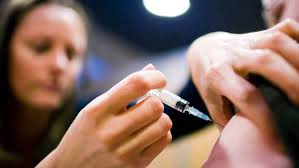
Vaccines are responsible for the control of many infectious diseases that were once common in worldwide.
Make sure that your family and friends are up-to-date on their immunizations. With children enrolling in or returning to school, older students entering college, and adults and the health care community preparing for the upcoming flu season, this is a particularly good time to focus community attention on the value of immunization.
Vaccines are responsible for the control of many infectious diseases that once were common worldwide. Vaccines have reduced and, in some cases, eliminated many diseases that once routinely killed or maimed tens of thousands of infants, children and adults.
The viruses and bacteria that cause vaccine-preventable diseases and death still exist and can infect people who are not protected by vaccines. Vaccine-preventable diseases have a costly impact, resulting in doctors’ visits, hospitalizations, and premature deaths. (Sick children also can cause parents to lose time from work.)
Now, suppose you could make your child safe from some of the deadliest diseases in history and suppose that, at the same time, you also could help protect your neighbors’ children and other children around the country from the same diseases. Finally, suppose you could actually help to rid the world of some of these diseases that have been crippling and killing children for centuries.
You can do all of these things with one of the easiest and, yet, most powerful health tools ever developed. You can make sure your children get their shots.
There are 12 potentially serious diseases that vaccines protect against:
- Diphtheria,
- Haemophilus Influenza Type b (Hib)
- Hepatitis A
- Hepatitis B
- Measles
- Mumps
- Pertussis (Whooping Cough)
- Pneumococcal disease
- Polio
- Rubella (German Measles)
- Tetanus (lockjaw)
- Varicella (Chickenpox)
At least one shot is needed for each of these diseases, and for some of them, several doses are required for the best protection.
For more information on immunizations, call your local Health Department or contact your child’s pediatrician. You also may visit the CDC website at http://www.cdc.gov/vaccines/schedules/easy-to-read/child.html.
by Angela Hinkle | Jul 1, 2014
A picnic is a pleasure excursion for all ages, a delightful expedition away from the normal day. Whether at a park, at the beach, right outside under a tree, on the porch, or on the living room floor, picnics are a great way to slow down and enjoy.
Try some of these ideas for a little something different.
- For a night time picnic, make a pizza and some popcorn inside and take them outside for movie night. Use a projector to shine your favorite movie on a white sheet that you’ve hung up on the side of the house or a shed.
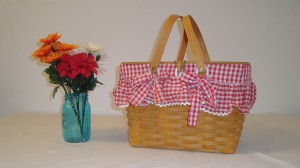
Enjoy a healthy and safe picnic this summer!
- Pack sandwiches cut in your favorite characters and shapes using cookie cutters.
- Make Ka-bobs. Put veggies, fruits, bread cubes, and chilled cheeses and meats on purchased wooden sticks or skewers. Making them is as much fun as eating them.
For food safety:
Keep cold foods cold. Plan to use well insulated coolers with plenty of ice. Don’t let cold foods sit out for more than one hour outside or two hours inside. Leftovers should be put back in coolers right after serving. The longer foods stay at unsafe temperatures, the more bad bacteria can grow and cause a foodborne illness.
Keep hot foods hot. Don’t let hot foods sit out for more than one hour. Plan to eat prepared foods shortly after they are cooked.
When it’s a rainy day or you just want the cool of air conditioning (or even something a bit warmer if its winter), take the picnic inside.
- Bring all the stuffed animals so everyone gets to come to the picnic. The more the merrier.
- Build a fort with blankets and a coffee table or if you have room, put up a tent on the living room floor for your picnic.
- Use chopsticks to eat peanut butter or other “sushi” rolls. To make this, smear peanut butter or low-fat cream cheese on a whole-wheat tortilla, put a banana in the middle, roll it up and sprinkle with cinnamon and raisins. Cut into slices. Ta da – Peanut Butter Sushi.
- For a romantic date night, pack a loaf of crusty bread, some Brie cheese, strawberries, whipped cream, and a bottle of something bubbly. Take cloth napkins and a comfy blanket to sit on.
Inside or outside – have a great picnic season!
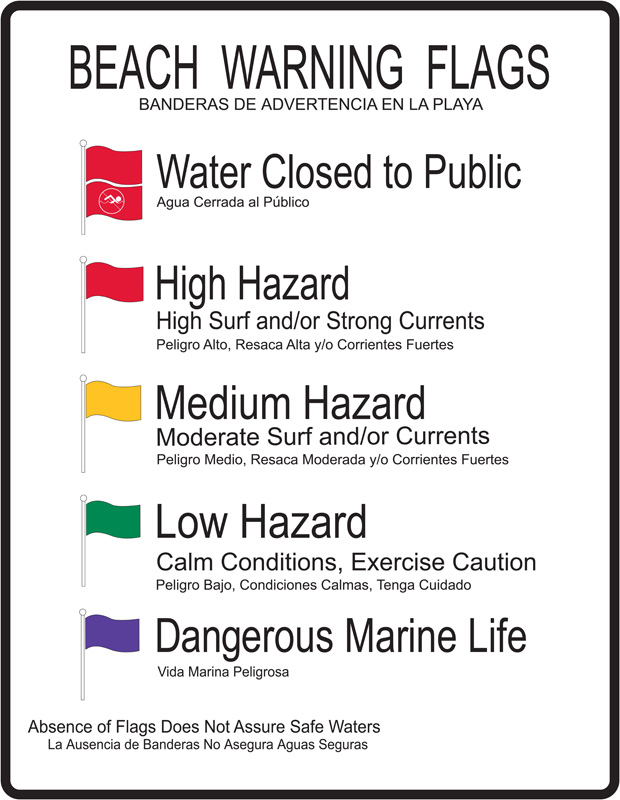
by Ricki McWilliams | Jun 27, 2014
Have a Wonderful Summer in the Water
With the recent official start of Summer water related activities are in full swing. When you and your loved ones are around the water it is important to know the basic safety and survival skills.
Water-safety survival skills:
- floating or treading water for one minute without a flotation device
- stepping or jumping into water over your head and returning to the surface
- treading water or floating in a full circle and then finding a way out of the water
- exiting a pool without using a ladder
- swimming 25 yards (the length of a standard pool) without stopping
Only 56% of adults who say they can swim can perform the 5 critical water-safety skills that could save their lives. (American Red Cross)
It is important to know how to swim and make smart choices around the water:
- always swim in designated areas supervised by lifeguards
- always swim with a buddy
Our emerald waters and white sandy beaches make visiting the Gulf a fun, family weekend activity but it is important to look for the beach flag warning system and know what each flag means.
[important]
Flag Warning System:
- Double Red Flag: Water is closed to public (dangerous water conditions)
- Red Flag: High Hazard (high surf and/or strong currents)
- Yellow Flag: Medium Hazard (moderate surf and/or currents)
- Green Flag: Low Hazard (calm conditions, exercise caution)
- Purple Flag: Marine Pests Present (jellyfish, stingrays, dangerous fish)
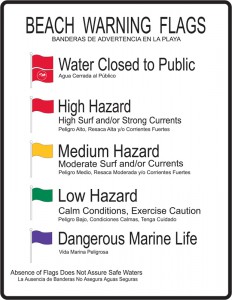
[/important]
Thinking you can do more in the water than you are capable of can endanger you as well as others. A recent CDC report noted that about 21,000 children and young adults drowned from 1999 through 2010. For people aged 29 and younger, drowning is one of the top three causes of unintentional injury or death.
Contact your local UF/IFAS Extension agent, local community pool or the American Red Cross to find more information on swimming lessons, water-safety education programs, and training opportunities for lifeguards and water-safety instructors.
by Judy Corbus | Jun 27, 2014
 “Whew, I’m thirsty!” As temperatures rise, you may be saying that more frequently and for good reason. Better than one-half of our body weight is water and we lose water daily in sweat, urine, and feces. Water converts food into energy, regulates our body temperature, protects and cushions vital organs, and promotes regular bowel movements. In hot weather and during physical activity, it is easy to become dehydrated if we lose more water than we consume. Symptoms of dehydration include: difficulty swallowing, dry mouth due to low saliva production, headaches, fatigue, loss of appetite, dry eyes, muscle cramps, and kidney stones.
“Whew, I’m thirsty!” As temperatures rise, you may be saying that more frequently and for good reason. Better than one-half of our body weight is water and we lose water daily in sweat, urine, and feces. Water converts food into energy, regulates our body temperature, protects and cushions vital organs, and promotes regular bowel movements. In hot weather and during physical activity, it is easy to become dehydrated if we lose more water than we consume. Symptoms of dehydration include: difficulty swallowing, dry mouth due to low saliva production, headaches, fatigue, loss of appetite, dry eyes, muscle cramps, and kidney stones.
Most persons need six to eight cups of fluid every day. If you are eating high-fiber foods or taking a fiber supplement, taking certain medications, especially diuretics or “water pills,” engaging in vigorous physical activity, or the weather is hot and humid, you will need to increase your fluid intake. One-third of healthy persons 65 years or older have mild dehydration. If you have a senior adult in your life, encourage them to drink plenty of fluids to stay hydrated.
In addition to water, include these beverages regularly:
- Fruit juices – 100 percent juice, not a juice drink, which has added sugar. Six fluid ounces a day is enough.
- Low-sodium vegetable juices
- Low-fat or fat-free milk
- Vegetable or milk-based soups
Here are a few tips for adding more fluids:
- Start the day with a cup of water.
- Drink a cup of water about ½ hour before meals.
- Drink a full glass of water with your medications. This is best for most medications, but check with your pharmacist.
- Drink water before heading outdoors for yardwork or recreation. Thirst indicates fluid loss so drink before you feel thirsty. Take frequent water breaks during outdoor activity, especially in heat and high humidity. Drink one to two cups, or more if needed, of water during and after being outdoors.
- Fill a water bottle and carry it with your during the day.
- Eat “juicy” fruits, such as watermelon, peaches, cantaloupe, and honeydew. Chill for a refreshing treat.
What about sports drinks? Sports drinks contain water, sugar for energy, and electrolytes, including sodium, to replace those lost through perspiration. They promote fluid retention and tend to encourage fluid intake because of their taste. They are highly recommended during intense physical activities that last over one hour. For casual activities of less than an hour, water is a good choice for hydration. Be aware that beverages high in sugar, including fruit juices, can cause nausea or gastrointestinal distress. Caffeine or alcohol increase urine output and reduce fluid retention. Carbonated beverages can make you feel full, decreasing the amount of fluid you drink.
So stay hydrated this summer with healthy fluid choices to beat the heat!
Sources: Healthy Eating: Fluids
Casa, D.J., et al. Fluid Replacement for Athletes Journal of Athletic Training. 2000; 35(2): 212224.

by Angela Hinkle | Jun 27, 2014
“School’s out!” Time to head outdoors to play.
In their Physical Activity Guidelines, the Department of Health and Human Services, http://www.health.gov, recommends at least one hour of moderate to vigorous physical activity every day for overall better health. No worries, though. You don’t have to do it all at once and what you and your family choose to do should be fun and keep your interest.
 Here are a few reminders when staying physical:
Here are a few reminders when staying physical:
- Water, water, and more water – make sure you replenish your fluids. Try drinking your water with ice, fruit, bendable straws, or from bottles with funky-colored sleeves to keep it interesting. Keep plenty of fruits and veggies on hand for snacks to stay hydrated as well.
- Apply, apply, and apply – sunscreen, that is. Set up a sunscreen station so everyone knows where to find the various bottles, sticks, and sprays of sunscreen. Small bottles of sunscreen with hooks that hang on belt loops are also becoming more readily available.
- Pick the best time of day for you. For many, earlier in the day or later in the afternoon are a little cooler, which makes it easier to be outside. (Unfortunately, those are mosquitoes’ favorite times of the day, too, so be sure to use protection against mosquito and other bug bites.)
- Pick the right environment. Make sure you have some shady spots or have the ability to come indoors to cool off.
- More water – water balloons, water squirters, and sprinklers are always fun. Poke holes in an empty plastic 2- liter soda bottle, attach a hose to the bottle opening, and hang it upside down to make a great outdoor shower.
So what are you waiting for? Go out and (safely) have some fun in the sun!









